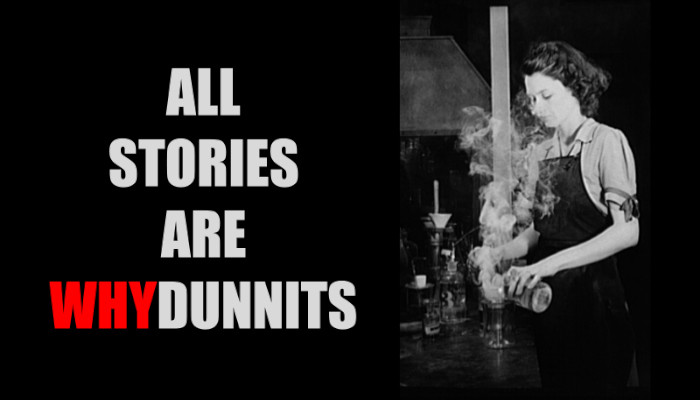
Mystery writers reveal just enough information to create a WhoDunnit puzzle for the reader to solve. Yet, the story doesn’t end with a discovered culprit, because we don’t yet know the crux of the story–the WhyDunnit–when the accused explains why they chose their actions. You see, all stories are WhyDunnits because we want to know why people choose their actions.
In our recent series on metaphor, we discussed how humans are autonomous beings that evaluate the signals gathered through their five senses and make decisions primarily for self-preservation. However, there’s something missing from that equation. While we’re all born selfish, we eventually learn that a life requires the help of others to reach our full potential. So, in addition to making decisions that benefit ourselves, we simultaneously seek collaboration opportunities.
I first learned of Moral Foundations Theory when fellow storyteller, Park Howell, recommended that I read Jonathan Haidt’s book, The Righteous Mind. In it, Haidt describes five moral foundations that influence human behavior:
- Care: We feel human connections through our shared experiences. For example, since we as individuals understand the concept of pain, our innate capacity for empathy causes us to dislike seeing pain in others and so we feel compelled to take care of other members of our communities.
- Fairness: True collaboration requires alliances with people who are worthy of our trust. One such test is “reciprocal altruism,” whereby if someone does us a favor, we feel an obligation to return it. Experience teaches us to align with individuals that reciprocate while avoiding those who just take, take, take.
- Loyalty: We expect those who’ve earned our trust to be loyal. As a result, we respect those who keep their promises while rejecting those who don’t.
- Authority: All communities are built upon hierarchies. Families have parents, companies have management, and communities have leaders. Healthy communities rely on the trust that each member will perform their role. Leaders are responsible for making decisions that protect the community. Those farther down the hierarchy are expected to respect that authority and support the group through playing their roles.
- Sanctity: The human experience teaches us that while all things have value, some things are more valuable than others. Those at the top of the list, such as life, religious beliefs, or the way we conduct ourselves, are sacrosanct and thus worthy of our vehement defense.
But there are two sides to morality. For example, every moral compass has a north and a south pole. Consider:
- Care vs. Harm
- Fairness vs. Cheating
- Loyalty vs. Betrayal
- Authority vs. Subversion
- Sanctity vs. Degradation
It doesn’t take much imagination to see the roles of protagonist and antagonist–with the left side representing virtue and the right side representing vice. The best storytellers use these concepts to draw an audience into a WhyDunnit. For example, when the protagonist betrays an ally or the antagonist opts for fairness, the storyteller presents a puzzle for the audience to solve: Why would a good-guy be disloyal or a bad-guy be fair?
The best characters act in ways that seem incongruous with achieving the best outcomes. The next time you write a story, consider experimenting with each character’s moral foundations.
And remember, bad morals make for good stories.
Photo Credit: United States Office Of War Information, Hollem, Howard R, photographer. Production. Tin smelting. Texas City Texas Galveston County, 1942. July. Photograph. https://www.loc.gov/item/2017694353/.